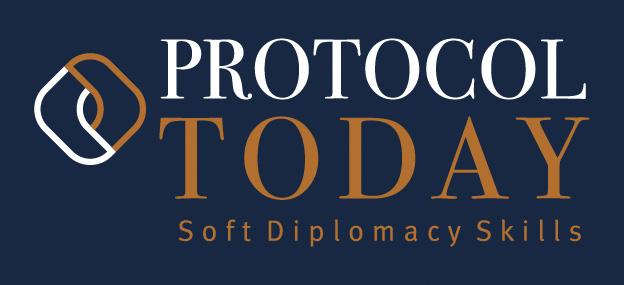Nowadays, all companies look for differentiating elements from their competitors to improve their corporate image before the different interest groups or stakeholders.
The companies invest in R + D + I (Research + Development and innovation) for the constant improvement of the product. Still, a plus to the service would be the protocol as a differentiating element so that it will be explained how this tool can improve the corporate image.
Within corporate communication, everything communicates and the image that we project as a company. Therefore, the question arises: What is the corporate image?
The corporate image is what the company says + what the company does; this is the image.
Having a positive image helps in:
- Obtain the respect and acceptance of the public.
- Enhance the image of the brand.
How can the Business Protocol help our corporate image?
To answer this question, it is important to know some key concepts.
The protocol is the set of rules established by law or tradition, uses, and customs for the performance of a certain official act and unofficial acts. Within the protocol, we can find the official protocol, military protocol, religious protocol, university protocol, and sports protocol, among others. Still, there is also the business protocol, and it is the one that is developed within the corporations. Therefore, the protocol is not only framed within the palatine (typical of the palaces), but it can be a differential tool of the corporate image. Therefore, it is important to understand that this discipline is one more tool in communication at the company’s service.
The suitable protocol transmits messages and shows outwardly that the company or home is in order. So the protocol in the business environment has become a necessity. It is a tool to achieve excellence.
Protocol in the company is:
- Courtesy.
- Care for the image of the company and its staff.
- The speeches.
- Design of spaces and scenarios in events and meetings.
- Taking care of the guests.
It is essential to develop an internal protocol manual, which includes rules and recommendations, for the preparation of acts and aspects of a more social nature, such as a personal image.
In company events, it is important to formalise events to enhance the corporate image and see it as a differentiating element in corporate communication. The events that can be organised are corporate events (work meetings, signing of agreements, general meeting of shareholders, awards ceremony), as well as commercial events (fairs, congresses, presentations), other events (laying the first stone, site visit, inaugurations and discovery of commemorative plaques); external events, with social repercussion, regularly organised by third parties (sponsorship of events), thereby enhancing the image of the company.
Well-managed acts will help to enhance the image of the company.
The parts of the protocol act in company events are the following:
- Corporate symbols, such as the company logo, must be present on the institutional flag, which will bear the company colours, invitations, advertising banner for the event, etc. It should be noted that the company’s logo must be in the photography points, such as the presidency table.
- The host and the presidency are the people who motivate the act and have a great responsibility in making decisions. He is the image and represents the company on the spot.
- A guest list must be established with their respective treatment for the guests. Those guests must be ordered (authorities, guests of honour, special guests, collaborators, clients, sponsors, general guests, and consorts).
- The reception of guests defines who receives and from where they receive. Precedents and treatments.
- The VIP room is an exclusive, comfortable area with a private bathroom, drinks, and meals. It is a waiting room until the event begins.
- The speeches have a particular formula for each type of event, so the head of the protocol cabinet will be the one who gives the guideline.
- Access and event security;
- Accreditations;
- Institutional gifts or corporate gifts help to generate good institutional relationships and go hand in hand with the courtesy that is printed on these details, which will be aligned with the company’s policy and detailed in a corporate gift catalogue, which will have levels for different audiences (partners, suppliers, visitors, etc.), this will help us to know what to give and when to give;
- The book of honour is a book whose purpose is that all the personalities and guests of honor who attend the events organised by the company can sign it—made of a material that enhances and adorns it with an embossed silver cover must have the company logo.
- The dismissal at the events also has a protocol to follow, the most important authority being the one who leaves the event first and will be accompanied by the person who received it from the company, generating a feeling in the visitor of having been attended at all times, both on arrival and at the farewell.
Finally, it is good to measure the impact and results. Tailored events have to be organised, creative, impactful, and with content, generating a memorable memory.
ProtocolToday Magazine
Share this article

Written by: MG. Jorge PRADO, Master in public relations, events, and Protocol, an expert in Corporate Communication.
19 September 2021, PERU
Category: BP
Reference: JP19-0921P




